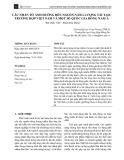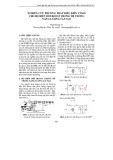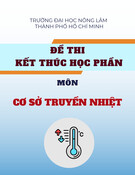
REGULAR ARTICLE
The role of power sources in the European electricity mix
Bernard Bonin
1,*
, Henri Safa
1
, Françoise Thais
1
, Axel Laureau
2
, Elsa Merle-Lucotte
2
, Joachim Miss
3
,
Danylo Matselyuk
3
, Yann Richet
3
, and François-Marie Bréon
4
1
Commissariat à l’Énergie Atomique et aux Énergies Alternatives, Direction de l’Énergie Nucléaire, CEA Saclay,
Bât. 121, 91191 Gif-sur-Yvette cedex, France
2
PHELMA/Grenoble INP and LPSC/IN2P3/CNRS, 53 rue des Martyrs, 38026 Grenoble cedex, France
3
Institut de Radioprotection et de Sûreté Nucléaire, 31 avenue de la Division Leclerc, 92262 Fontenay-aux-Roses, France
4
Laboratoire des Sciences du Climat et de l’Environnement, L’Orme des Merisiers, 91191 Gif-sur-Yvette cedex, France
Received: 3 May 2015 / Accepted: 13 November 2015
Abstract. The ongoing debate in Europe about energy transition enhances the necessity to evaluate the
performance of the envisaged mix of power sources, in terms of production cost, CO
2
emissions and security of
supply. In this study, we use MIXOPTIM, a Monte-Carlo simulator of the behavior of a mix of power sources on
a territory, to evaluate the performance of the present EU power mix. After a validation on the French mix, we
applied it to the whole EU territory and made variational calculations around the present mix to evaluate the
performance impacts induced by small changes in installed renewable power and nuclear power. According to
the analyzed criteria, the study shows that a plausible way to keep an affordable MWh in Europe with minimal
amount of CO
2
emissions and acceptable security of supply could be to extend the life of existing Gen II nuclear
reactors. All other options lead to the degradation of the mix performance, on at least one of the three criteria
listed above.
1 Introduction
The ongoing debate in Europe about energy transition
gave rise to many scenarios about the evolution of the
EU power mix. It is necessary to evaluate the perfor-
mance of the mix in these scenarios, in terms of cost of
electricity, CO
2
emission and security of supply. In the
present paper, our ambition is not to study a complete
scenario extending over the future decades. We limit
our analysis to the near-term future, and explore the
consequences of small changes in the composition of the
mix. For this purpose, we use MIXOPTIM [1], a Monte-
Carlo simulator of the behavior of an electricity mix of
power sources on a territory, to evaluate the performance
of the present European power mix, and indicate how
these performance indicators would evolve under an
elementary change in the composition of the source mix.
Despite its simplicity, we believe that this evaluation can
be a useful guide to understand the value and
consequences of the policy decisions associated with
the energy transition.
2 Principle of the MIXOPTIM simulation
Theevaluationofthecostofanelectricitymixisnotassimple
as it might appear at first sight. Several factors introduce
complications in the system. Firstly, electricity cannot be
stored in largeamountsat the present time, and thedemand,
which fluctuates, must be met exactly and at all times by
providing sources. Secondly, these sources are called upon in
a specific order, within the limits of their availability.
Thirdly, this availability itself is variable, especially for
renewable sources like wind or solar energy, which take an
increasing share in the mixes in Western countries.
Moreover, the capacity of interconnexion between territories
is growing, thus giving an increasing importanceto imported
and exported power fluxes (with wildly fluctuating prices).
The conjunction of these four factors suggests a rather non-
linear behavior of the system, and a priori hampers a simple
determination of average values for cost evaluation.
The classical approach based on the use of averaged
load factors is not fully satisfactory because it is not self-
consistent: it uses load factors as input data while they
should in principle be considered as output data, since they
depend on the energy mix.
Some authors have treated this problem by simulating
the behavior of the mix on a time-dependent basis, using
the hourly chronicles of the demand over past years [2].
* e-mail: bernard.bonin@cea.fr
EPJ Nuclear Sci. Technol. 3, 10 (2017)
©B. Bonin et al., published by EDP Sciences, 2017
DOI: 10.1051/epjn/e2015-50012-0
Nuclear
Sciences
& Technologies
Available online at:
http://www.epj-n.org
This is an Open Access article distributed under the terms of the Creative Commons Attribution License (http://creativecommons.org/licenses/by/4.0),
which permits unrestricted use, distribution, and reproduction in any medium, provided the original work is properly cited.

Another plausible, almost equivalent approach is to use
the Monte-Carlo method, which is well suited to treat
complicated physical systems. The Monte-Carlo simula-
tion gives access to the whole phase space, as opposed to
time-dependent approaches using hourly chronicles. It has
the advantage of being fully self-consistent and potentially
independent of the chronicles of past years, thus allowing
extrapolation studies on hypothetic future mixes with
completely different composition of power sources and
demand.
In the MIXOPTIM simulation, the territory is
equipped with power sources of various kinds, e.g. wind,
solar, hydraulic sources, etc. The availability of the sources
at any given time tis treated as a random variable, to
take into account the fluctuations of sun, wind, and, more
generally, the availability of all sources. The demand is
also treated as a random variable to take into account the
fluctuating nature of the demand. The power demand can
be met by the power sources existing on the territory, or
by imports from outside. A sampling of these random
variables corresponds to a particular situation of the mix,
for which the sources are solicited in a pre-defined ranking
order, to fulfill the power demand. For this situation of the
mix at time t, the hourly cost of the electricity, the hourly
amount of CO
2
emitted, the amount of power exported or
imported from outside can be calculated. Average values of
these quantities are then calculated after many samplings
of the random variables. The MIXOPTIM simulation
also enables one to calculate the probability of a power cut,
e.g. the occurrence of the event where the power demand
cannot be satisfied by an undersized power mix.
MIXOPTIM is an open-access software, which is
available on http://www.mixoptim.org. Details on the model
have been described in a previous paper [1].
3 Input data for the scenarios simulation
MIXOPTIM needs the following input data:
–the cost of the MWh for each production source has been
split into a variable component, proportional to the
produced power, and a fixed component, proportional to
the installed power. The fixed component corresponds
mainly to the amortization of the investment. The cost
structure of the sources has been taken from reference [3].
Gen II and Gen III nuclear power plants are treated
separately because of their very different cost structure;
–the CO
2
emission of the sources has also been split into a
fixed and a variable component; the fixed part takes into
account the whole life cycle of the power production
source [4], including the CO
2
produced during its
construction;
–the probability law for the demand has been deduced
from the hourly chronicles of the demand over past years,
available in reference [5];
–in the same way, probability laws for the availability
of the sources have been obtained from the hourly
chronicles of the production (for the mandatory sources,
wind and sun, the availability factor equals the
production factor since all the available sources are
actually used). Since no aggregated data exists at the
European level, we considered the French hourly
chronicle (available from Ref. [5]) to derive the
probability laws of the sources. As will be shown later
in the text (Tab. 2), the reasonable agreement between
the observed and calculated load factors of the sources
(especially wind and sun) confirms that this approxima-
tion does not introduce important bias in the results;
–the composition of the European power mix has been
taken from reference [6](Tab. 1).
4 Validation of MIXOPTIM
The results of MIXOPTIM have been validated by
comparison with the observed performance of the 2011
French mix [1](Tab. 2).
The agreement between the observed and calculated
results suggests that the MIXOPTIM simulation is able to
give reasonably precise and accurate information on a mix.
Another piece of validation of MIXOPTIM can also be
found in the analysis of load factors of the sources in the
European mix: the load factors Kp observed for the sources
in 2013 are correctly reproduced by MIXOPTIM at the
European scale (Tab. 3).
This validation exercise has also highlighted that the
quality of the results depends more on the quality and
consistency of the input data than on the simulation tool
itself. Traceability of the data used as input is crucial!
The validation of MIXOPTIM on the French and
European mixes being satisfactory, we use confidently
the tool to perform trends and sensitivity studies on the
European mix.
5 Sensitivity of the performance of the mix
to small changes in its composition
Three performance criteria can be calculated with
MIXOPTIM:
–an economic performance indicator of the mix, defined as
the average cost Cof the MWh, divided by the average
power demand: Peconomy ¼C=D, expressed in €/MWh;
–the CO
2
emissions of the mix, defined as the average CO
2
emissions divided by the average power demand:
PCO2¼CO2=D, expressed in kilograms of CO
2
/MWh;
–the probability of occurrence of a power cut P
cut
at any
time tis also provided by the MIXOPTIM software.
In this first sensitivity study, these three criteria were
calculated for the 2013 EU mix (taken as a reference), and
for mixes modified by the addition of 20 GW of installed
power for a given power source (Tabs. 4 and 5). The
addition of 20 GW was made separately and successively
for each power source, and the performance indicators of
the modified mix were calculated with MIXOPTIM.
The results of the addition of 20 GW of installed power
in wind, solar PV, hydraulic, etc. sources are summarized
in Table 5.
The choice of an increment of 20 MW results from a
compromise between the precision of the Monte-Carlo
calculation, and the need to avoid non-linear effects that
2 B. Bonin et al.: EPJ Nuclear Sci. Technol. 3, 10 (2017)

Table 1. Installed power in the EU member states in 2013 [6].
2013 Installed power capacity
(GW) Wind Solar Hydro Nuclear Gas Coal Oil Biomass
and waste Geothermal
Austria 1.7 0.7 13.1 0.0 4.3 2.5 0.4 2.1 0.0
Belgium 1.7 3.0 1.4 5.9 5.6 1.0 2.1 1.2 0.0
Bulgaria 0.7 1.0 3.2 1.9 0.8 1.9 0.1 0.0 0.0
Croatia 0.2 0.0 2.1 0.0 0.7 nd 0.9 0.0 0.0
Cyprus 0.1 0.0 0.0 0.0 0.4 nd 1.2 0.0 0.0
Czech Rep. 0.3 2.1 2.2 3.9 1.0 1.4 0.1 0.7 0.0
Denmark 4.8 0.5 0.0 0.0 3.4 4.3 1.4 1.5 0.0
Estonia 0.3 0.0 0.0 0.0 0.3 nd 0.0 0.2 0.0
Finland 0.4 0.0 3.2 2.8 3.1 4.5 3.3 2.0 0.0
France 8.1 4.7 25.6 63.1 10.5 6.1 11.6 1.5 0.0
Germany 34.6 36.0 11.2 12.1 26.0 30.7 4.2 8.2 0.0
Greece 1.9 2.6 3.4 0.0 4.5 0.0 2.5 0.1 0.0
Hungary 0.3 0.0 0.1 1.9 4.5 0.1 0.4 0.5 0.0
Ireland 2.0 0.0 0.5 0.0 4.3 0.8 1.1 0.0 0.0
Italy 8.6 17.6 22.0 0.0 56.3 7.0 9.3 3.2 0.7
Latvia 0.1 0.0 1.6 0.0 1.1 nd 0.0 0.1 0.0
Lithuania 0.3 0.1 0.9 0.0 2.3 nd 0.9 0.1 0.0
Luxembourg 0.1 0.1 1.1 0.0 0.5 0.0 0.0 0.0 0.0
Malta 0.0 0.0 0.0 0.0 0.0 nd 0.7 nd 0.0
Netherlands 2.7 0.7 0.0 0.5 23.2 10.1 0.8 1.6 0.0
Poland 3.4 0.0 2.4 0.0 1.0 19.8 0.4 0.6 0.0
Portugal 4.7 0.3 5.7 0.0 5.5 1.8 1.2 0.6 0.0
Romania 2.5 1.0 6.6 1.3 3.6 0.2 2.9 0.1 0.0
Slovakia 0.0 0.5 2.6 1.8 0.8 0.9 0.5 0.2 0.0
Slovenia 0.0 0.3 1.3 0.7 0.4 0.8 0.0 0.1 0.0
Spain 22.9 7.0 18.8 7.1 33.4 8.5 4.8 1.2 0.0
Sweden 4.5 0.0 16.7 9.5 1.1 1.1 3.1 3.4 0.0
UK 10.5 2.7 4.3 9.2 35.4 21.8 3.3 4.2 0.0
Total EU 117.3 81.1 150.0 121.7 233.9 125.3 57.1 33.4 0.8
Table 3. Comparison between the observed and calculated load factors of the sources for the 2013 EU power mix.
Wind Solar Hydro Coal Biomass Gas Fuel Nuclear
Kp observed 0.23 0.12 0.30 0.82 0.60 0.25 0.13 0.82
Kp calculated 0.21 0.12 0.32 0.74 0.76 0.31 0.10 0.74
Table 2. Comparison between the observed and calculated performances of the French mix 2011 [1].
Average
demand (MW) Cost
(€/MWh) CO
2
(kg/MWh) Average imported
power (MW) Average exported
power (MW)
Observed (2011) 57,740 44.7 56.4 1630 7970
Calculated 54,720 46.1 60.6 660 11,950
B. Bonin et al.: EPJ Nuclear Sci. Technol. 3, 10 (2017) 3

would arise in the mix for an exceedingly large increment
in installed power. The statistical precision of the
Monte-Carlo calculation is ±0.01 €/MWh on the cost,
±0.01 kgCO
2
/MWh on the CO
2
emission, and ±210
–5
on
the power cut probability.
It can be seen from Table 5 that the addition of installed
power increases the cost of the MWh for all sources, except
for nuclear Gen II. In this special case, since the European
fleet of Gen II reactors can only decrease, one should rather
consider that a reduction of the Gen II installed power
would result in an increase of the cost of the MWh.
The CO
2
emissions of the mix increase or decrease
according to whether the considered source is low carbon or
not. It also depends on the value of the load factor Kp of the
source.
Of course, the addition of installed power reduces the
probability of a cut, more efficiently if the source is
controllable, less efficiently if it is intermittent. The
increase of the cost of the MWh mentioned above can be
seen as the cost of the insurance against power cuts.
A global dimensionless figure of merit P
global
of the
mix performance can be constructed, as a weighted sum of
the normalized criteria defined above:
Pglobal ¼jeco
Peconomy
Pecoref
þjCO2
PCO2
PCO2ref
þjcut
Pcut
Pcutref
:
This global figure of merit gives an estimate of the mix
performance compared to the performance of the reference
mix. The values chosen in this paper for the weighting
coefficients are j
eco
= 0.8, jCO2= 0.1, j
cut
= 0.05. These
values reflect only the subjective view of the authors on the
relative importance of the three performance criteria of the
mix. This choice can be viewed as the attribution of an
economic value to an avoided ton of CO
2
, and to an avoided
yearly hour of power cut.
Value of an avoided ton of CO
2
:€=tCO2
¼1000:jCO2
jeco
Pecoref
PCO2ref
:
Value of an avoided yearly hour of power cut:
€=MWh ¼
1
8760
jcut
jeco
Pecoref
Pcutref
:
The values of the weighting coefficients jproposed here
correspond to giving a value of 47 €to the avoided ton of
CO
2
, and of 0.79 €/MWh to the avoided yearly hour of
power cut. Other values for the weighting coefficients can
be used by interested readers if they wish to use the open
access MIXOPTIM software to perform their own
calculations.
By definition, this global figure of merit is dimensionless
and equal to unity for the reference mix (here, the mix EU
2013). It is interesting to see how this figure of merit varies
for small variations of the composition of the mix by
calculating the sensitivity to changes in the installed power
a
i
of the source i:
∂Pglobal
∂ai
¼0:8∂Peconomy=∂ai
Pecoref
þ0:15 ∂PCO2=∂ai
PCO2ref
þ0:05 ∂Pcut=∂ai
Pcutref
:
Here, the partial derivatives ∂P
∂aihave been approximat-
ed as DP
Daiwith Da
i
= 20 GW.
Table 6 below gives the sensitivity of the global figure
of merit to a change in the installed power a
i
of the
source i.
A lower criterion value corresponds to an improvement
of the mix performance. Consequently, if an increase of the
installed power a
i
of the source iresults in a negative value
of the sensitivity ∂Pglobal
∂ai, this increase corresponds to an
improvement of the mix performance, according to the
global criterion. Table 6 shows that the largest improve-
ment of the global figure of merit of the mix is obtained via
an increase of the installed nuclear power.
This study uses the OECD 2010 cost structure,
established before the Fukushima accident [3]. The
additional safety requirements imposed on the nuclear
Table 5. The sensitivity of the EU power mix to changes in the installed power for the various power sources. The
quantities Delta cost, Delta CO
2
and Delta P
cut
are the changes in cost, CO
2
production and power cut probability
induced by a 20 GW increase in installed power for a given power source, wind, solar, hydraulic, etc.
Wind Solar Hydro Coal Biomass Gas Fuel Nucl. Gen II Nucl. Gen III
Delta cost
(€/MWh) 0.7 2.14 1.1 1.16 3.1 0.95 1.06 0.87 1.37
Delta CO
2
(kgCO
2
/MWh)
4.3 2.0 7.1 17.6 13.1 2.7 2.8 19.3 19.3
Delta P
cut
1.2e-4 –7.4e-5 5.1e-4 5.6e-4 5.1e-4 5.5e-4 4.1e-4 5.5e-4 5.5e-4
Table 4. The performance of the 2013 EU power mix, calculated by MIXOPTIM as a reference basis.
Cost P
economy ref
90.1 €/MWh
CO
2
production PCO2
ref
377 kgCO
2
/MWh
Probability of power cut P
cut ref
8.10e-04 –
4 B. Bonin et al.: EPJ Nuclear Sci. Technol. 3, 10 (2017)

reactors after the accident may modify the fixed costs of
the Gen II and Gen III nuclear power. This effect has not
been taken into account here. On the other hand, the fixed
cost of solar, and, to a lesser extent, wind power, is
steadily decreasing, and the 2010 figures are already
slightly outdated. More recently, the cost of gas has also
decreased, especially in the United States, where some
Gen II reactors have been recently closed because they
were no longer economically competitive. The above
figures are therefore probably somewhat too pessimistic
for renewable sources, and too optimistic for nuclear Gen
II and III.
Another approximation made in this study must also be
mentioned: Europe has been treated as a “copperplate”,
assuming no restriction to the power transfer from one
region to the other. This global treatment results in an
underestimate of the use of expensive but locally available
sources that are needed more often in reality than in the
simulation because of regional interconnexion limitations.
6 Conclusions
With the above reservations in mind, the study shows that
a possible way to keep an affordable MWh in Europe with
minimal amount of CO
2
production and acceptable
security of supply could be to extend the life of existing
Gen II nuclear reactors, provided this extension can be
made in reasonable safety conditions. All other options lead
to the degradation of the mix performance, on at least
one of the three criteria listed above. An increase of the
Gen III installed nuclear power degrades slightly the
economic performance of the mix, but improves its global
performance.
This work has been conducted under the auspices of the
National Agency for the Coordination of Research on Energy
(ANCRE), with the financial support of the NEEDS Program.
References
1. B. Bonin et al., MIXOPTIM: a tool for the evaluation
and the optimization of the electricity mix in a territory,
Eur. Phys. J. Plus 129, 198 (2014)
2. F. Wagner, Electricity by intermittent sources: an analysis
based on the German situation 2012, Eur. Phys. J. Plus 129
20 (2014)
3. Projected costs of generating electricity, report OECD/NEA,
2010
4. H. Safa , CO
2
production, Rev. Gen. Nucl. 2100 (2012)
5. RTE website: http://www.rte-france.com/fr/eco2mix/eco2
mix
6. F. Thais et al., Energy Handbook, edited by CEA (Institut
de Technico-économie des Systèmes Énergétiques, 2013),
www.cea.fr
Cite this article as: Bernard Bonin, Henri Safa, Françoise Thais, Axel Laureau, Elsa Merle-Lucotte, Joachim Miss, Danylo
Matselyuk, Yann Richet, François-Marie Bréon, The role of power sources in the European electricity mix, EPJ Nuclear Sci.
Technol. 3, 10 (2017)
Table 6. The sensitivity of the global figure of merit of the EU power mix to an elementary change in installed power.
Wind Solar Hydro Coal Biomass Gas Fuel Nucl. Gen II Nucl. Gen III
∂Pglobal
∂ai
(MW
1
)
1.60e-07 6.8e-07 1.22e-06 8.8e-07 4.6e-7 1.2e-06 7.6e-07 2.5e-06 1.5e-06
B. Bonin et al.: EPJ Nuclear Sci. Technol. 3, 10 (2017) 5



















![Ngân hàng trắc nghiệm Kỹ thuật lạnh ứng dụng: Đề cương [chuẩn nhất]](https://cdn.tailieu.vn/images/document/thumbnail/2025/20251007/kimphuong1001/135x160/25391759827353.jpg)






